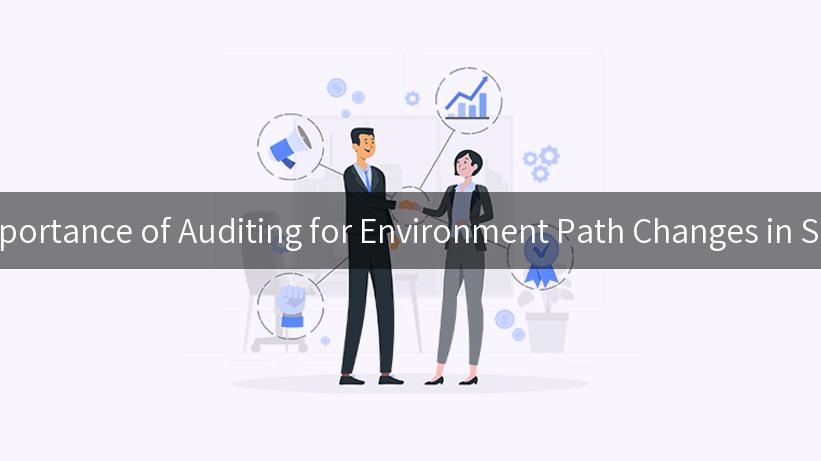
In the modern landscape of software development, where rapid changes and deployments are the norm, maintaining control and oversight of the various environments—development, testing, and production—has become increasingly critical. One of the fundamental practices in ensuring the stability and security of these environments is auditing for environment path changes. This article will delve into this crucial process, particularly in the context of securing AI applications, leveraging API governance, and managing APIs effectively with tools like IBM API Connect.
The Growing Need for Solid Audit Mechanisms in Software Development
As organizations embrace Agile methodologies and DevOps practices, the change frequency in environments has skyrocketed. With these changes come risks—unapproved modifications, disruptions in service, and even security breaches. Here, the significance of auditing for environment path changes cannot be overstated. Auditing acts as a safeguard against unwanted changes, ensuring each step in the deployment pipeline is documented, traceable, and verifiable.
Leveraging API governance becomes paramount in this environment, as APIs connect various components, often spanning multiple systems and solutions. By implementing robust auditing practices, organizations can maintain control over their API usage, ensure compliance, and effectively mitigate risks. For enterprises that utilize AI technologies, such as through IBM API Connect, the stakes are even higher. Ensuring the secure use of AI requires not just concentration on data integrity but also an audit trail that allows internal teams to track changes over time, ensuring compliance with regulations and organizational policies.
What is Auditing for Environment Path Changes?
Auditing for environment path changes refers to the systematic tracking of alterations made to the paths that applications or services reside in different environments. This includes documenting every deployment or configuration change while maintaining a history of actions taken within the system. Such an auditing process ensures that all changes are:
- Approved: Changes are vetted and authorized before implementation.
- Documented: Every action is logged, providing a clear history for review.
- Traceable: Enables quick identification of when and how a change occurred.
- Reversible: Assists in swiftly rolling back to previous states if necessary.
These components work together to mitigate risks associated with changes that could lead to operational failures or security vulnerabilities.
| Auditing Component |
Description |
| Approved |
Changes must be vetted and authorized to prevent unauthorized modifications. |
| Documented |
Every change is logged for traceability and later review. |
| Traceable |
Quick identification of changes aids in troubleshooting and accountability. |
| Reversible |
Supports rolling back changes to ensure stability in the environment. |
Implementing Effective Auditing Practices
To leverage the benefits of auditing effectively, organizations need to develop a structured approach. Here are some vital strategies:
-
Define Clear Policies: Organizations must establish clear auditing policies that outline what changes need to be audited, by whom, and over what period.
-
Use Automation Tools: Employ tools like IBM API Connect for API management which can be integrated with audit logging capabilities. Automation reduces the potential for human error and streamlines the auditing process.
-
Regular Updates and Reviews: Regularly update auditing policies and review logs to ensure they remain relevant and effective. Consider implementing routine audits to identify discrepancies.
-
Train Teams: Regular training for development and operations staff on the importance of auditing and how to use the tools effectively is critical for success.
-
Monitor and Report: Continuous monitoring of environment path changes should be complemented with reporting mechanisms that provide insights into audit logs. These reports can fuel decision-making and illustrate adherence to compliance regulations.
The Role of IBM API Connect in Auditing
IBM API Connect serves as a robust platform for managing APIs, facilitating the process of API upstream management, which is critical for organizations that rely on external services and integrations. By leveraging this tool’s functionality, teams can gain deeper visibility into how APIs are used and modified throughout their lifecycle.
API Governance frameworks within API Connect allow for policy enforcement, analytics, and real-time monitoring. These capabilities can help organizations maintain a concise auditing process, ensuring that all changes in API configurations are logged and accessible for scrutiny.
{
"auditing": {
"enabled": true,
"logs": [
{
"timestamp": "2023-10-01T12:00:00Z",
"changeType": "path update",
"user": "dev-username",
"previousPath": "/old/path",
"newPath": "/new/path",
"reason": "Service upgrade"
}
]
}
}
In the above example, a JSON format showcases how an auditing log for a path change might be structured, capturing essential information for later reviews.
APIPark is a high-performance AI gateway that allows you to securely access the most comprehensive LLM APIs globally on the APIPark platform, including OpenAI, Anthropic, Mistral, Llama2, Google Gemini, and more.Try APIPark now! 👇👇👇
Conclusion
The importance of auditing for environment path changes in software development cannot be overstated. With the growing complexity of development environments and the reliance on AI technologies, institutions must adopt comprehensive auditing practices. Leveraging tools like IBM API Connect for effective API governance facilitates this process, allowing organizations to secure their AI applications, manage their API resources effectively, and ensure compliance with regulatory demands.
As companies continue to evolve and adapt to the fast-paced digital landscape, investing in robust auditing mechanisms will not only enhance security but also foster a culture of accountability and openness. Properly implemented, auditing is not just a compliance checkbox, but rather a strategic asset that can drive organizational success in the age of AI and advanced software development practices.